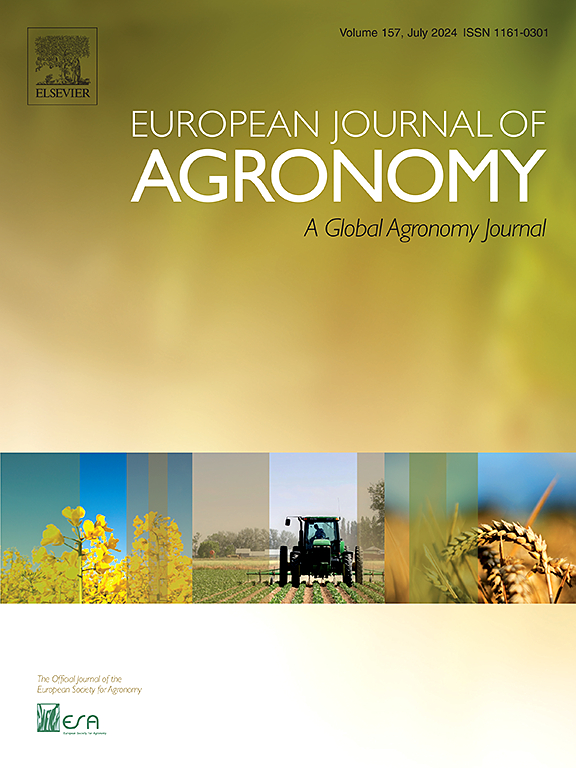橄榄果实的酚含量和概况:在非地中海生长环境中对比热制度的影响
IF 4.5
1区 农林科学
Q1 AGRONOMY
引用次数: 0
摘要
橄榄果实中酚类化合物的含量是一个令人感兴趣的问题,不仅因为它们对橄榄油质量的贡献,而且因为它们对人体健康的有益影响。虽然一些研究提到了遗传和农艺因素对橄榄果实酚类成分的影响,但对环境生长温度的影响仍缺乏研究。本研究探讨了在阿根廷不同环境下生长的两种橄榄品种(Arbequina和Coratina)的不同热制度对亲水性酚含量的影响。与生长环境相关的变异性对所有分析的化合物都是显著的;较低的总酚含量与温暖的环境有关。毛蕊花糖苷和橄榄苦苷是反映这一普遍趋势的化合物;它们的含量在最温暖的环境中比在最寒冷的环境中低约2-3倍。为了评估热记录与酚含量之间的关系,测试了各种模型;包括热时间在内的拟合效果最好。一般来说,数据来自cv。Arbequina的拟合性优于cv。Coratina。综上所述,基因型相关的反应表明,当在较冷的环境中生长时,受试品种有能力积累更多的总酚和特定酚。本文章由计算机程序翻译,如有差异,请以英文原文为准。
Phenolic content and profile of olive fruits: Impact of contrasting thermal regimes in non-Mediterranean growing environments
The content of phenolic compounds in olive fruits is a matter of interest, not only because of their contribution to olive oil quality but also to their beneficial effects on human health. While some studies mention genetic and agronomic factors affecting the olive fruit phenolic composition, there is still a lack of information on the role of the environmental growth temperature. This study addresses the impact of different thermal regimes on hydrophilic phenol contents from two olive cultivars (Arbequina and Coratina) growing at several environments in Argentina. The variability associated with the growing environment was significant for all compounds analyzed; lower total phenol contents were associated with warmer environments. Verbascoside and oleuropein aglycone were the compounds reflecting more clearly this general tendency; their contents were approximately 2–3 fold lower in the warmest than in the coldest environment. To assess relationships between thermal records and phenolic contents, various models were tested; those including the thermal time showed the best fit. In general, data from cv. Arbequina showed better fit than those from cv. Coratina. As a summary, a genotype-associated response is suggested whereby the tested cultivars would have the ability to accumulate higher amounts of total and specific phenols when grown in cooler environments.
求助全文
通过发布文献求助,成功后即可免费获取论文全文。
去求助
来源期刊

European Journal of Agronomy
农林科学-农艺学
CiteScore
8.30
自引率
7.70%
发文量
187
审稿时长
4.5 months
期刊介绍:
The European Journal of Agronomy, the official journal of the European Society for Agronomy, publishes original research papers reporting experimental and theoretical contributions to field-based agronomy and crop science. The journal will consider research at the field level for agricultural, horticultural and tree crops, that uses comprehensive and explanatory approaches. The EJA covers the following topics:
crop physiology
crop production and management including irrigation, fertilization and soil management
agroclimatology and modelling
plant-soil relationships
crop quality and post-harvest physiology
farming and cropping systems
agroecosystems and the environment
crop-weed interactions and management
organic farming
horticultural crops
papers from the European Society for Agronomy bi-annual meetings
In determining the suitability of submitted articles for publication, particular scrutiny is placed on the degree of novelty and significance of the research and the extent to which it adds to existing knowledge in agronomy.
 求助内容:
求助内容: 应助结果提醒方式:
应助结果提醒方式:


